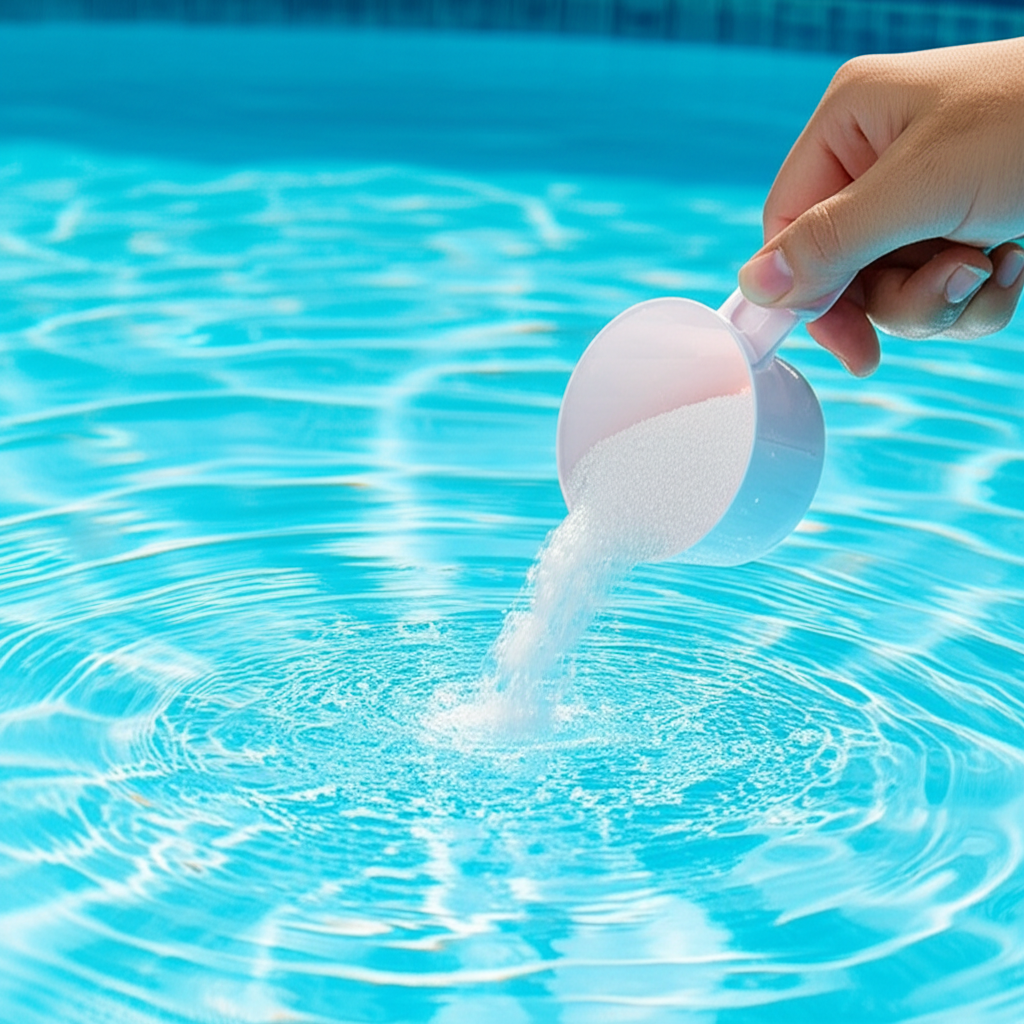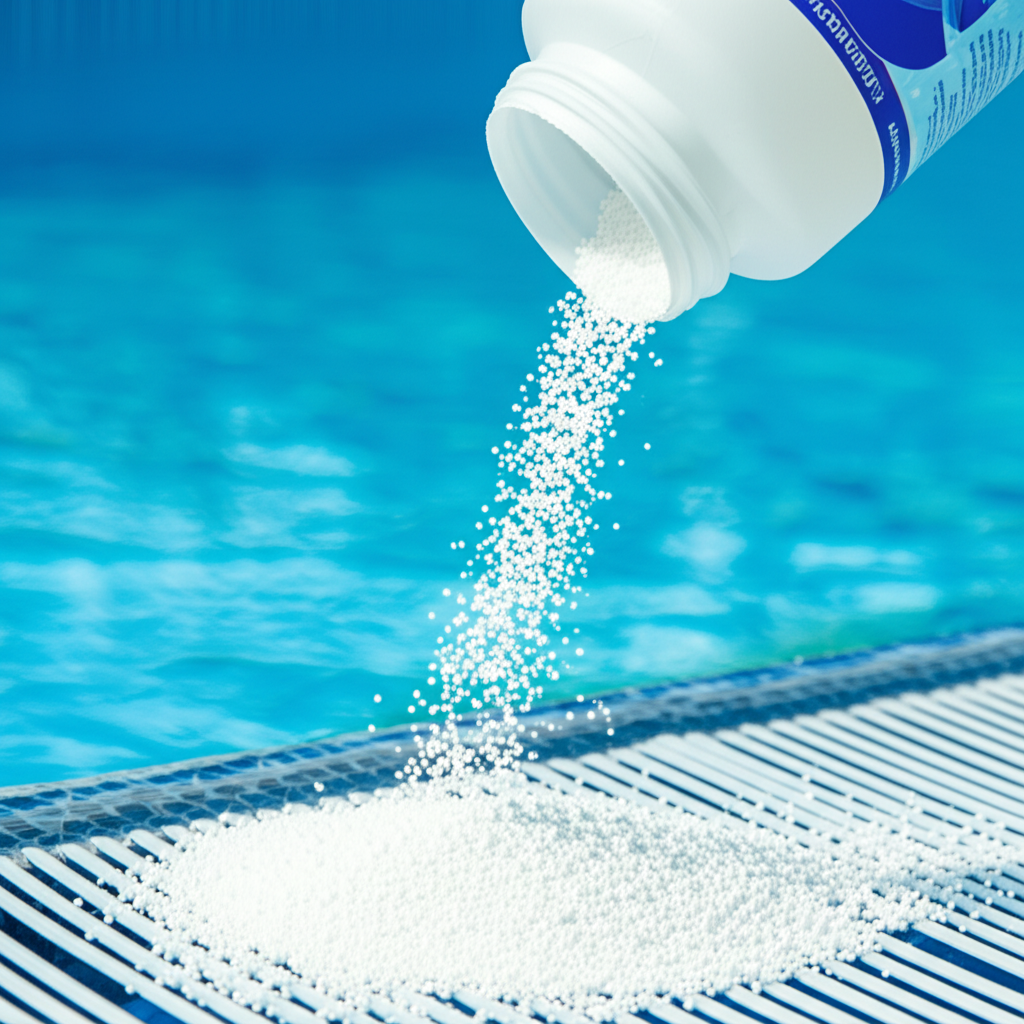- What Exactly is Cyanuric Acid?
- The Lifespan of Chlorine: Why You Need a Pool Stabilizer
- Optimal Levels of Cyanuric Acid for Healthy Pool Water
- Adding and Adjusting Your Pool Stabilizer
- Troubleshooting Common Cyanuric Acid Issues
- Maintaining Effortless Pool Stabilizer Control
Cyanuric Acid is a critical, yet often misunderstood, component of maintaining a clean, healthy swimming pool. Often referred to simply as a pool stabilizer or chlorine stabilizer, this unsung hero plays an indispensable role in safeguarding your chlorine from the sun’s harsh ultraviolet (UV) rays, ensuring your sanitization efforts aren’t in vain. Understanding and properly managing your cyanuric acid levels is the key to effortless pool stabilizer control, allowing for consistent sanitation, reduced chemical consumption, and truly sparkling water.
What Exactly is Cyanuric Acid?
At its core, Cyanuric Acid (CYA) is a chemical compound that acts as a buffer for chlorine in swimming pools. When chlorine is exposed to direct sunlight, it degrades rapidly—sometimes losing up to 50% of its potency within just a few hours. This makes it incredibly difficult to maintain consistent sanitizer levels, leading to a host of water quality problems from cloudy water to persistent algae blooms.
CYA works by forming a temporary, weak bond with free chlorine molecules. This bond essentially encases the chlorine, protecting it from the destructive effects of UV radiation. When a contaminant like bacteria or algae enters the water, the chlorine is released from its bond with CYA to do its job, then re-establishes the bond with CYA, ready to be protected again. Think of it as sunscreen for your chlorine, dramatically extending its lifespan and effectiveness in outdoor pools.
The Lifespan of Chlorine: Why You Need a Pool Stabilizer
Without an effective pool stabilizer, chlorine would be a constant battle. Imagine adding chlorine to your pool only to have it evaporate into thin air (or rather, break down under the sun) before it can even sanitize your water. This rapid degradation not only wastes valuable chemicals and money but also leaves your pool vulnerable to microbial growth.
By using CYA, you create a reservoir of protected chlorine. This means that instead of constantly adding more sanitizer to combat UV breakdown, your existing chlorine dose can work harder and longer. This reduces the frequency of shocking, lowers overall chemical costs, and provides a more stable and reliable sanitation system for your pool. It’s the difference between a frantic sprint to keep chlorine levels up and a steady, controlled pace that maintains optimal water chemistry.
Optimal Levels of Cyanuric Acid for Healthy Pool Water
While essential, the “Goldilocks principle” applies to CYA: not too little, not too much, but just right.
Too Low (below 20-30 ppm): Without enough CYA, your chlorine will break down quickly, leading to ineffective sanitation, rapid chlorine consumption, and potentially green water or persistent algae. You’ll find yourself chasing chlorine levels, adding more and more sanitizer to no avail.
Too High (above 80-100 ppm): Surprisingly, too much CYA can be just as detrimental as too little. When CYA levels become excessively high, they can lead to a condition often termed “chlorine lock.” While the chlorine is protected, it becomes too protected, slowing down its release and thereby reducing its sanitizing power. This phenomenon can make your pool prone to algae growth even with what seems to be a sufficient free chlorine reading. High CYA can also cause cloudy water and make it difficult to maintain clarity.
For most residential pools using conventional chlorine, the ideal range for CYA is typically 30-50 parts per million (ppm). Saltwater pools can often benefit from slightly higher levels, around 60-80 ppm, due to the continuous generation of chlorine. Always refer to your pool chemical manufacturer’s recommendations or a trusted pool professional.
Adding and Adjusting Your Pool Stabilizer
Incorporating CYA into your pool maintenance routine is straightforward but requires patience.
1. Preparation: First, accurately determine your pool’s volume in gallons. This is crucial for calculating the correct amount of CYA to add.
2. Application Method: Granular CYA should never be added directly to the pool water or skimmer basket where it can get caught in the filter. Instead, it’s best dissolved slowly. You can place it in a skimmer sock or an old sock, hang it in the pool, and let it dissolve over several hours (even up to 24 hours). Squeezing the sock occasionally can help speed up the process. Some people also dissolve it in a bucket of hot water first before slowly pouring it into the skimmer.
3. Circulation: Ensure your pool pump is running for at least 24-48 hours after adding CYA to help distribute it thoroughly. Avoid backwashing or cleaning your filter during this period, as undissolved CYA can be lost.
4. Testing: Wait at least 24-48 hours after adding before retesting your CYA levels. It takes time for the chemical to fully dissolve and integrate into the water.
Adjusting Levels:
To Increase: Add more granular CYA as outlined above, or switch to a stabilized chlorine product (like Dichlor or Trichlor) which contains CYA.
To Decrease: This is the tricky part, as CYA does not evaporate or get filtered out. The most effective way to lower high CYA is through dilution – draining a portion of your pool water and refilling it with fresh water. Specialized CYA reducers are available, but their effectiveness can vary, and they should be used with caution and by following manufacturer instructions precisely.
Troubleshooting Common Cyanuric Acid Issues
Persistent Algae with High Chlorine: If your pool has algae despite having adequate free chlorine levels, check your CYA. If it’s too high, your chlorine might be “locked” and unable to effectively sanitize. Dilution is the primary solution.
Rapid Chlorine Loss: If your chlorine levels plummet quickly, especially on sunny days, your CYA is likely too low. Add more to bring it into the optimal range.
Cloudy Water: While many factors cause cloudy water, excessively high CYA can certainly contribute by reducing chlorine’s efficacy.
Inaccurate Readings: Always use a reliable test kit (liquid reagents are generally more accurate than test strips for CYA). Ensure the kit is not expired and follow instructions meticulously.
Maintaining Effortless Pool Stabilizer Control
Managing your pool stabilizer doesn’t have to be a chore. Once you understand its function and optimal ranges, it becomes a predictable part of your routine. Test your CYA levels regularly, especially at the beginning of the swim season, after heavy rain (which can dilute the water), or if you notice unusual chlorine consumption. By proactively monitoring and adjusting, you can ensure your chlorine is always working at its peak efficiency.
Cyanuric acid is not just another chemical; it’s the foundation of effective outdoor pool sanitization. By embracing its role and ensuring proper management, you’re not just maintaining a pool; you’re creating a consistently clean, safe, and enjoyable swimming experience with minimal fuss and maximum efficiency.




